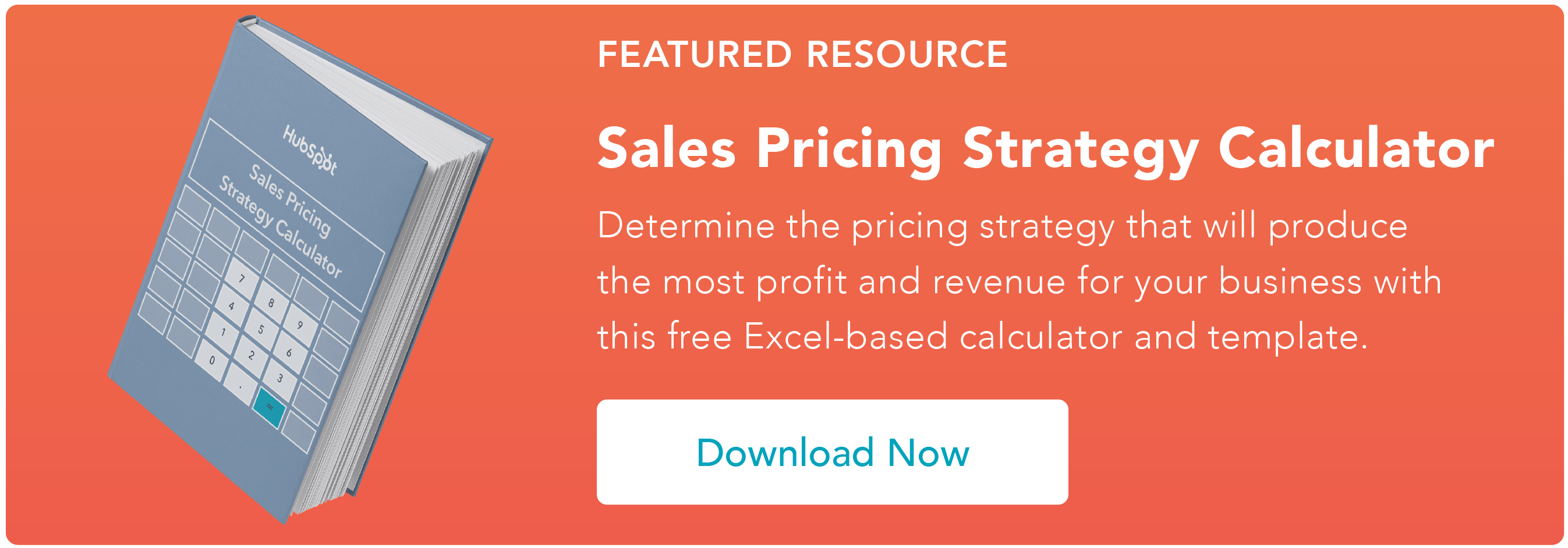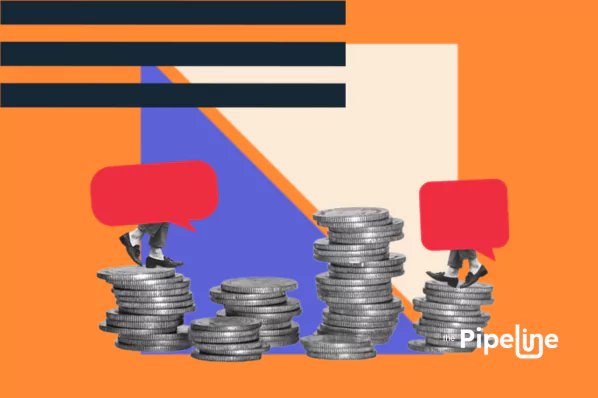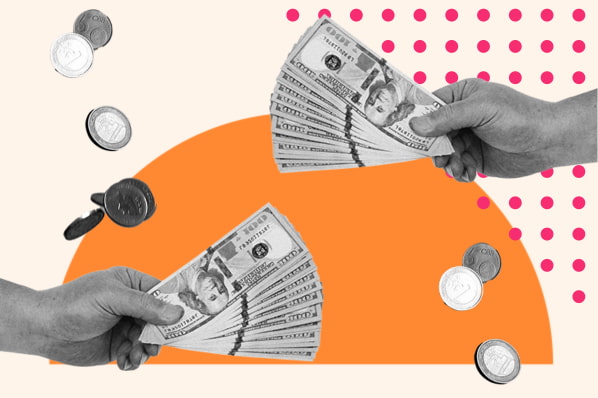1. Machine Learning Pricing
Machine learning pricing, also called algorithmic pricing and predictive pricing, involves using artificial intelligence to analyze trends and historical data to determine the best possible prices. These algorithms may look at various data points like buyer purchase history, current market demand, and competitor prices.
A form of machine learning pricing that you may already be familiar with is sales forecasting. AI will use data from your business’ sales history, like the number of deals closed at a specific price point, to predict future sales, a.k.a revenue. You might also conduct a sales forecast to see what revenue would look like at a different price point to make comparisons and decide which pricing model brings the most success.
This pricing strategy is valuable because it uses data to make predictions rather than human assumptions. While this strategy can be a standalone tool, other trends on this list use AI and algorithms to develop final price points.
2. Value-Based Pricing
Value-based pricing involves pricing products and services based on what your customers are willing to pay. Rather than pricing based on what you think costs should be, you analyze the value that customers will get from the product or service and price accordingly.
This strategy requires in-depth analysis and understanding of your target market and their buyer personas, as you are using their insight to understand what they do and don’t care about in the products they buy. A common practice is to have conversations with existing customers to understand what they would spend after having used the product.
Value-based pricing is a customer-centric model that can inspire customer loyalty and retention, as you're solving for their pain points without overcharging.
3. Transparent Pricing
Consumers have more access than ever before to the information they need to weigh product options before making a purchase. They no longer have to visit every business they're interested in; they can simply look online. Consumers that own a smartphone can even stand inside your store and compare your prices to a competitor right next door.
Given these factors, transparent pricing involves recognizing the access that customers have and giving them the information they need to make their decisions. They should easily find prices on your site pages and understand what they’re paying for. Customers that choose you over a competitor shouldn’t be surprised by unexpected hidden fees. Essentially, customers already know what their receipts will say and they won't hesitate to go elsewhere if you're deceitful.
You can think of it like this: if you’re a SaaS business with tiered packages, being transparent means outlining the features included at each pricing level. Instead of picking a package and hoping for the best, consumers can make informed decisions and go elsewhere if necessary.
4. Subscription Pricing
A growing number of services and products are offered on a subscription basis, from video streaming platforms to beauty products.
Subscription pricing is trending because it helps businesses generate a consistent stream of revenue and develop long-lasting relationships with loyal customers. These consumers then provide valuable insight into how your products are used, helping you make improvements and developments based on their needs. In addition, the perception is that incremental costs are lower than lump sum costs, which are more affordable.
Customers appreciate subscription pricing because of the convenience of not having to remember to re-purchase and, as mentioned above, the cost-efficiency of smaller monthly payments. If you offer different tiered subscription plans, they also value scalability as needs evolve.
Netflix, a video streaming service, offers a subscription model you may be familiar with. They offer three different plans based on the number of devices that can stream simultaneously and video quality. If you choose to upgrade or downgrade, you receive a prorated refund for the unused portion of the original plan.
5. Dynamic Pricing
Dynamic pricing goes by many different names: demand pricing, time-based pricing, geographic pricing, and surge pricing. The model involves pricing products and services based on market demands and current economic conditions.
Most businesses that use this strategy use machine learning to come up with final price points. Algorithms will analyze factors like competitor prices, market demand, and consumer behavior and adjust prices to match relevant circumstances.
Since markets and consumer demands are constantly changing, using this model can require frequent price adjustments. For example, rideshare companies often use surge pricing when a large volume of customers request rides in the same area, but there aren’t enough drivers to accommodate every request. The algorithms detect higher demand and raise prices until there are enough available drivers. Costs will eventually go down, but those who were eager to get home paid a higher rate and the businesses generated more revenue.
Want to get a better picture of what dynamic pricing is and how it can impact your business? Check out the video below.
6. Personalized Pricing
Personalized pricing is a targeted approach that focuses on pricing by consumer buying patterns. The method uses customer shopping history to guess what they’ll buy next and how much they would pay. This information helps businesses give returning customers the best possible price points and hyper-targeted deals.
Personalized pricing often uses machine learning through algorithmic recommendations. For example, customers may see offers on eCommerce sites that say things like “Customers who purchased [product name] also bought [product name],” in a checkout page. On Spotify, a music streaming service, Discover Weekly playlists use customer listening history to recommend new music. Overall, you’re predicting what customers will like based on their history with your business and using that insight to make recommendations and drive further sales.
This strategy is trending because it inspires customer loyalty. Customers feel like you understand their desires and offer them what they need, sometimes before they even know they need it.
Pick A Trend That Meets Your Business Needs
There are a variety of factors to consider when pricing your products. While it may be nice to simply charge based on production costs, you can actually stand to lose customers if your prices outweigh value.
Instead, consider leveraging pricing trends when valuing your products. Whether it’s machine learning to make personalized recommendations or using a subscription model with tiered options, the strategy you choose to use should make sense for your business and help you stand up to your competitors.
Pricing Strategy
.png?width=112&height=112&name=Image%20Hackathon%20%E2%80%93%20Vertical%20(45).png)








![Price Skimming: All You Need To Know [+ Pricing Calculator]](https://53.fs1.hubspotusercontent-na1.net/hubfs/53/price-skimming-strategy.jpg)

.jpg)
![B2B Pricing Models & Strategies [+ Pros and Cons of Each]](https://53.fs1.hubspotusercontent-na1.net/hubfs/53/b2b-pricing-models-and-strategies.jpg)